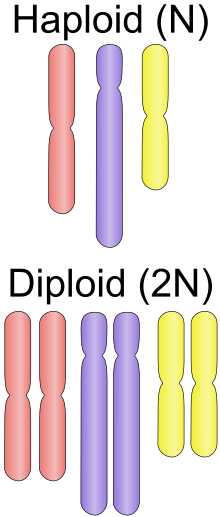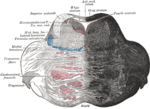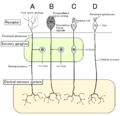Search results
 An organism's sex is female (symbol: ♀) if it produces the ovum (egg cell), the type of gamete (sex cell) that fuses with the male gamete (sperm cell)...25 KB (2,866 words) - 15:41, 23 April 2024
An organism's sex is female (symbol: ♀) if it produces the ovum (egg cell), the type of gamete (sex cell) that fuses with the male gamete (sperm cell)...25 KB (2,866 words) - 15:41, 23 April 2024 Symbiosis (from Greek συμβίωσις, symbíōsis, "living with, companionship, camaraderie", from σύν, sýn, "together", and βίωσις, bíōsis, "living") is any...52 KB (5,495 words) - 00:45, 26 April 2024
Symbiosis (from Greek συμβίωσις, symbíōsis, "living with, companionship, camaraderie", from σύν, sýn, "together", and βίωσις, bíōsis, "living") is any...52 KB (5,495 words) - 00:45, 26 April 2024 Pea (Pisum in Latin) is a pulse, vegetable or fodder crop, but the word often refers to the seed or sometimes the pod of this flowering plant species,...45 KB (5,024 words) - 17:26, 29 April 2024
Pea (Pisum in Latin) is a pulse, vegetable or fodder crop, but the word often refers to the seed or sometimes the pod of this flowering plant species,...45 KB (5,024 words) - 17:26, 29 April 2024 Ploidy (/ˈplɔɪdi/) is the number of complete sets of chromosomes in a cell, and hence the number of possible alleles for autosomal and pseudoautosomal...53 KB (5,943 words) - 03:50, 28 April 2024
Ploidy (/ˈplɔɪdi/) is the number of complete sets of chromosomes in a cell, and hence the number of possible alleles for autosomal and pseudoautosomal...53 KB (5,943 words) - 03:50, 28 April 2024 The areca nut (/ˈærɪkə/ or /əˈriːkə/) or betel nut is the fruit of the areca palm (Areca catechu), which grows in much of the tropical Pacific (Melanesia...39 KB (4,586 words) - 11:59, 21 April 2024
The areca nut (/ˈærɪkə/ or /əˈriːkə/) or betel nut is the fruit of the areca palm (Areca catechu), which grows in much of the tropical Pacific (Melanesia...39 KB (4,586 words) - 11:59, 21 April 2024 The loquat (Eriobotrya japonica, Japanese: 枇杷, biwa) is a large evergreen shrub or tree grown commercially for its orange fruit and for its leaves, which...27 KB (2,928 words) - 21:28, 29 April 2024
The loquat (Eriobotrya japonica, Japanese: 枇杷, biwa) is a large evergreen shrub or tree grown commercially for its orange fruit and for its leaves, which...27 KB (2,928 words) - 21:28, 29 April 2024- Sensory neurons, also known as afferent neurons, are neurons in the nervous system, that convert a specific type of stimulus, via their receptors, into...29 KB (3,232 words) - 15:35, 1 April 2024
 Sexual abstinence or sexual restraint is the practice of refraining from sexual activity for medical, psychological, legal, social, philosophical, moral...47 KB (5,423 words) - 17:59, 30 April 2024
Sexual abstinence or sexual restraint is the practice of refraining from sexual activity for medical, psychological, legal, social, philosophical, moral...47 KB (5,423 words) - 17:59, 30 April 2024 Lovebird is the common name for the genus Agapornis, a small group of parrots in the Old World parrot family Psittaculidae. Of the nine species in the...24 KB (2,541 words) - 13:37, 4 April 2024
Lovebird is the common name for the genus Agapornis, a small group of parrots in the Old World parrot family Psittaculidae. Of the nine species in the...24 KB (2,541 words) - 13:37, 4 April 2024 The reticular formation is a set of interconnected nuclei that are located in the brainstem, hypothalamus, and other regions. It is not anatomically well...62 KB (6,147 words) - 07:57, 21 March 2024
The reticular formation is a set of interconnected nuclei that are located in the brainstem, hypothalamus, and other regions. It is not anatomically well...62 KB (6,147 words) - 07:57, 21 March 2024




















